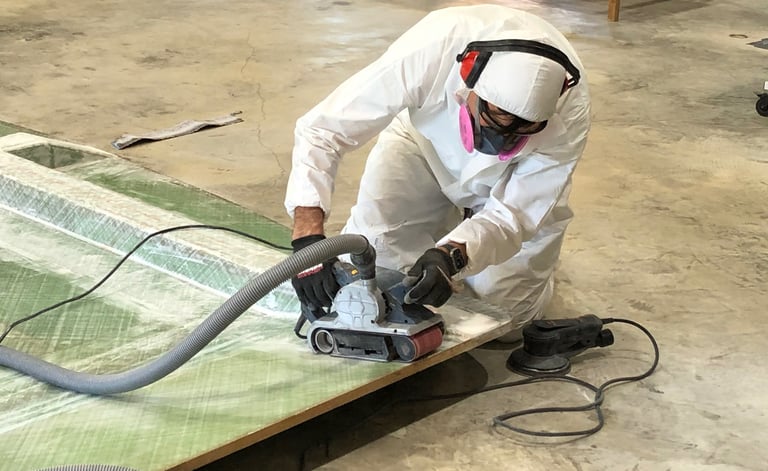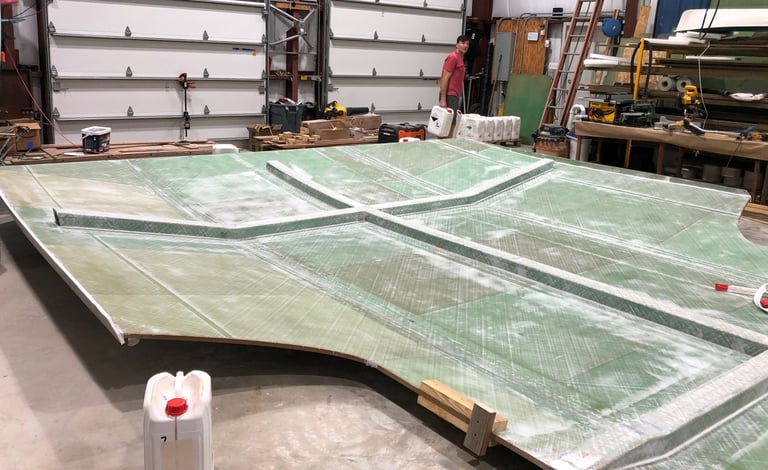#18: Raise the Roof!
Full disclosure: I could have written and posted this blog before Thanksgiving, but as you know, life happens and clones don’t exist yet. So, here I am, fat and happy from great food and company, and immediately being pushed into the Christmas season without recalling signing the contract that would psychologically put me in the “ready to party some more” mode. I am going to keep this short and sweet to catch you up on what happened before Thanksgiving so that we all can get back to singing songs about dashing through the snow.
While Felicity’s roof was upside-down, Nick drilled holes through the intersections of the beams so electric wires could be pulled through eventually.
We decided to glue some foam pieces into the beams that would act as a tabletop for the fiberglass to lay on top of. (In case you caught that last sentence, Mom, I can assure you that a preposition is a totally acceptable word to end a sentence with. Supporting colloquialism is what I am all about! That’s what I’m looking for! A grammar rule I can stand behind! I’m all in! I could go on and on, but I’ll simmer down—no need to stop by.)
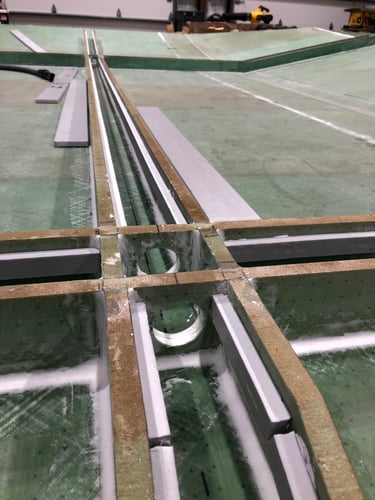

It was time for epoxy—and lots of it! My experience in baking and chemistry classes came in handy as I painstakingly measured and mixed up numerous batches for the beams’ fiberglass overlays. I kept the batches coming for the cute, hardworking guys on the roof.
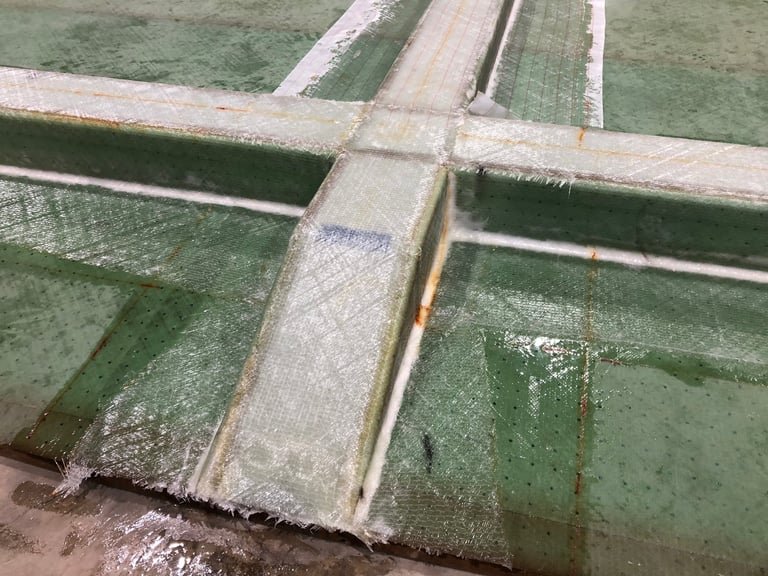

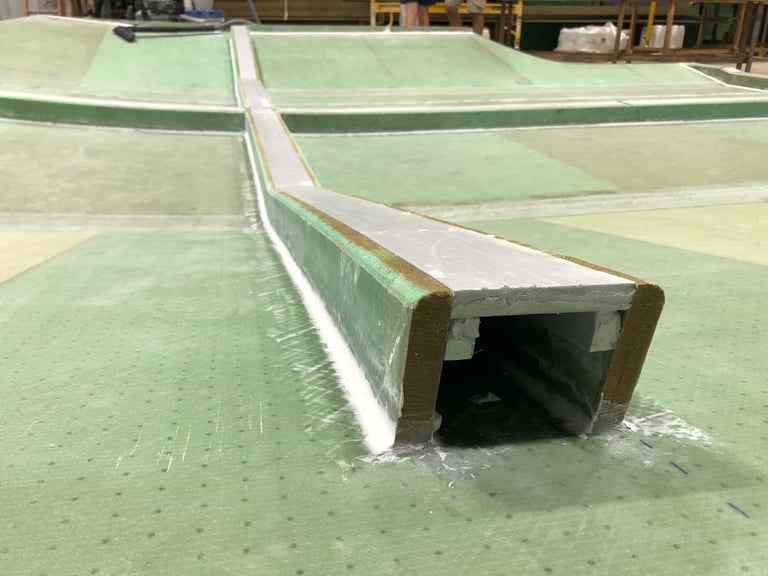

We laid peel ply on top of the epoxy while it was still wet so the beams would have a smoother surface. The next day, Tristan had fun pulling the fabric off.
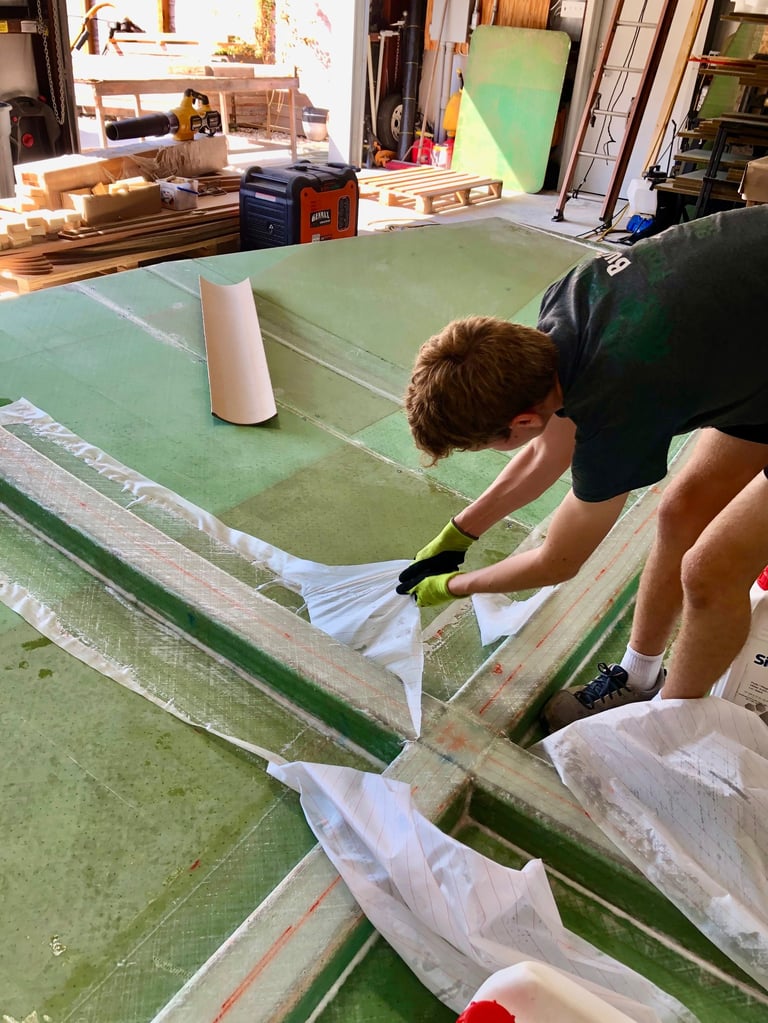

We then got busy filling in holes and sanding some more.
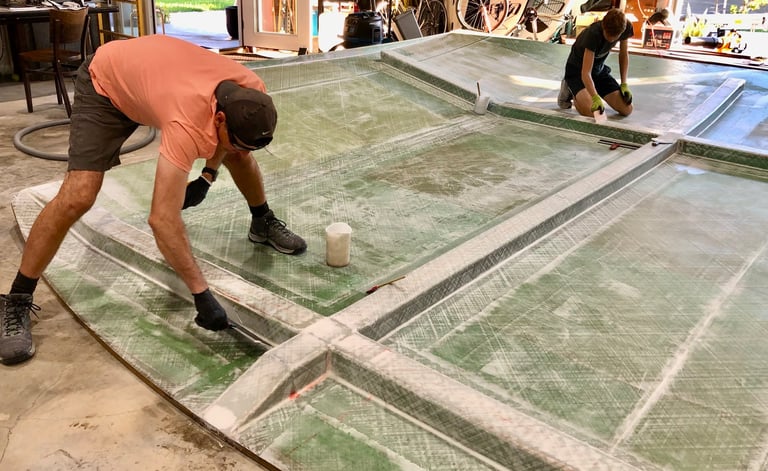

Finally, the roof was pretty enough to be flipped and hung out of the way so we’d have room to build the rest of the boat. For minimal damage from the straps, Nick secured wood blocking to the narrower part of the roof (that will overhang the stern cockpit).
We put some foam cushions below the wide end of the roof and made sure the big batch of resin was backed up against that side, attached the strap around the blocking and to the hoists, and then we just pushed the button and held our breath.

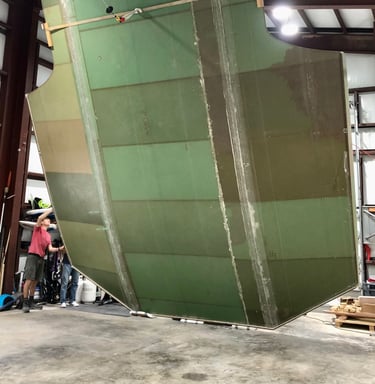
Once the roof was vertical, we moved the resin to the other side and gradually let the roof slide on down, topside up. Easy peasy, especially with help from friends who were curious. The flip took about 20 minutes.
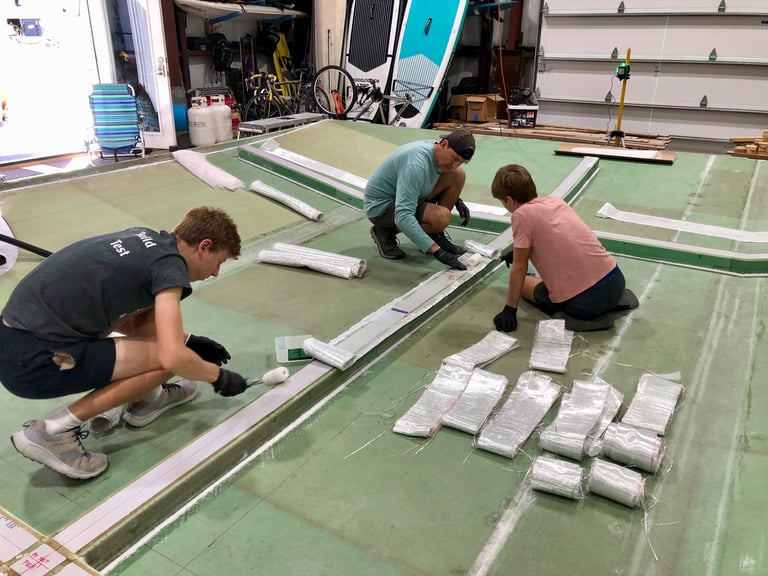

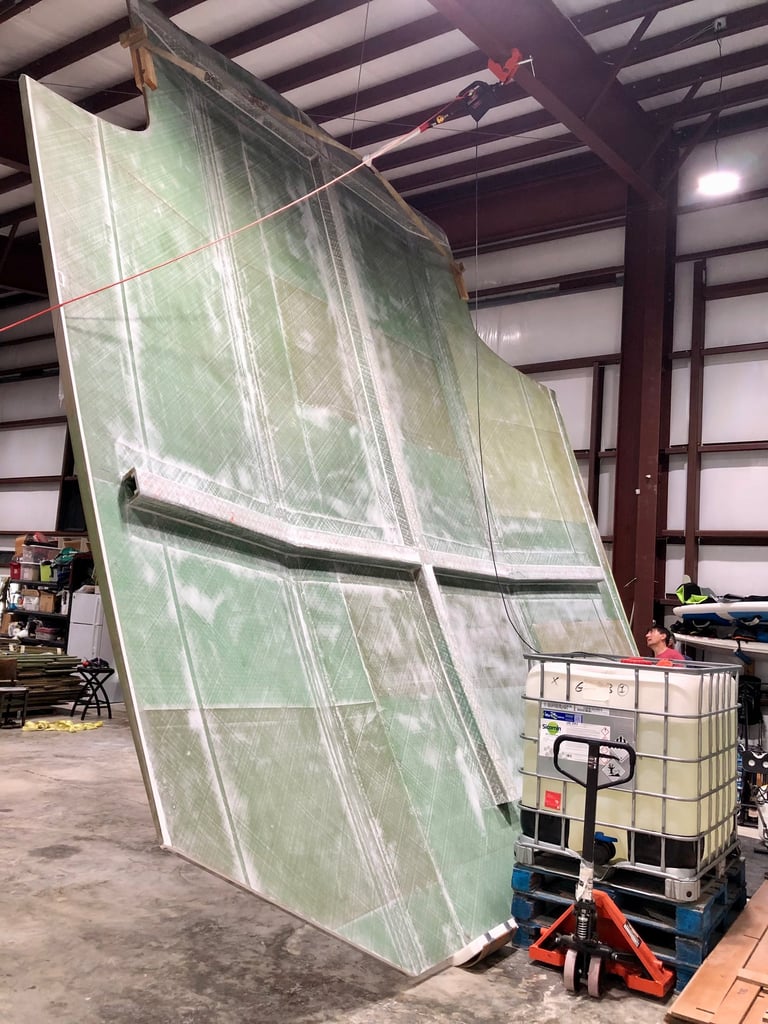

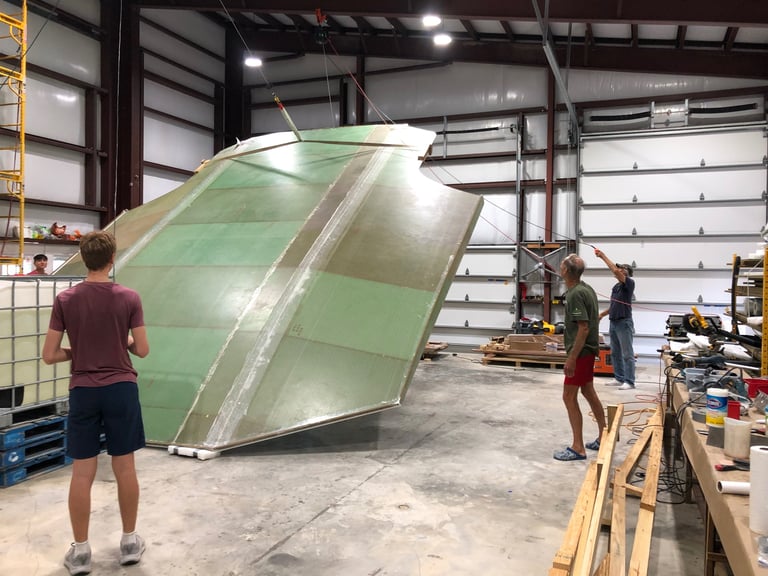

Nick had built a wooden bracing structure ahead of when we flipped, so we placed it underneath the roof next.
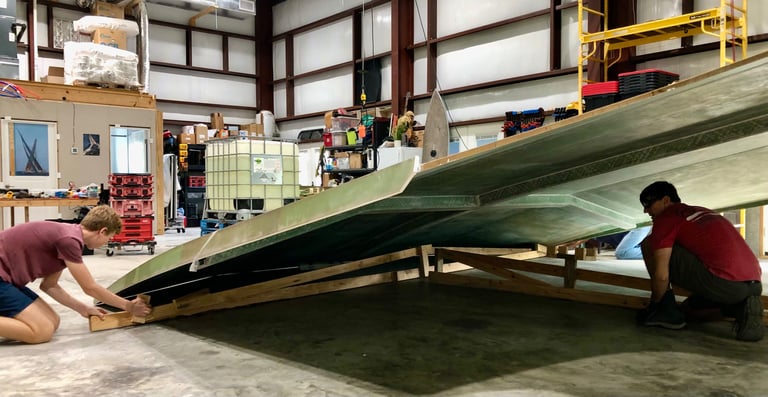

Up, up, and away!
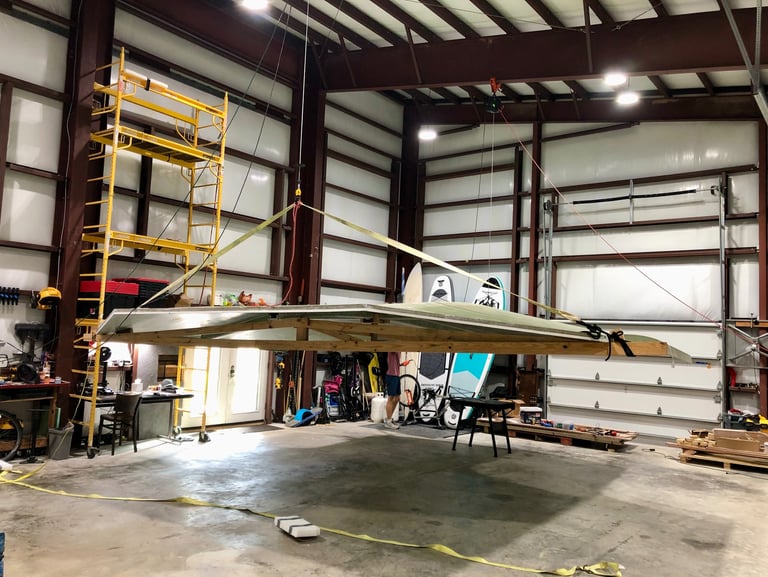

Just a couple of hours after the flip started, we were pleased to see a roof attached to a roof.
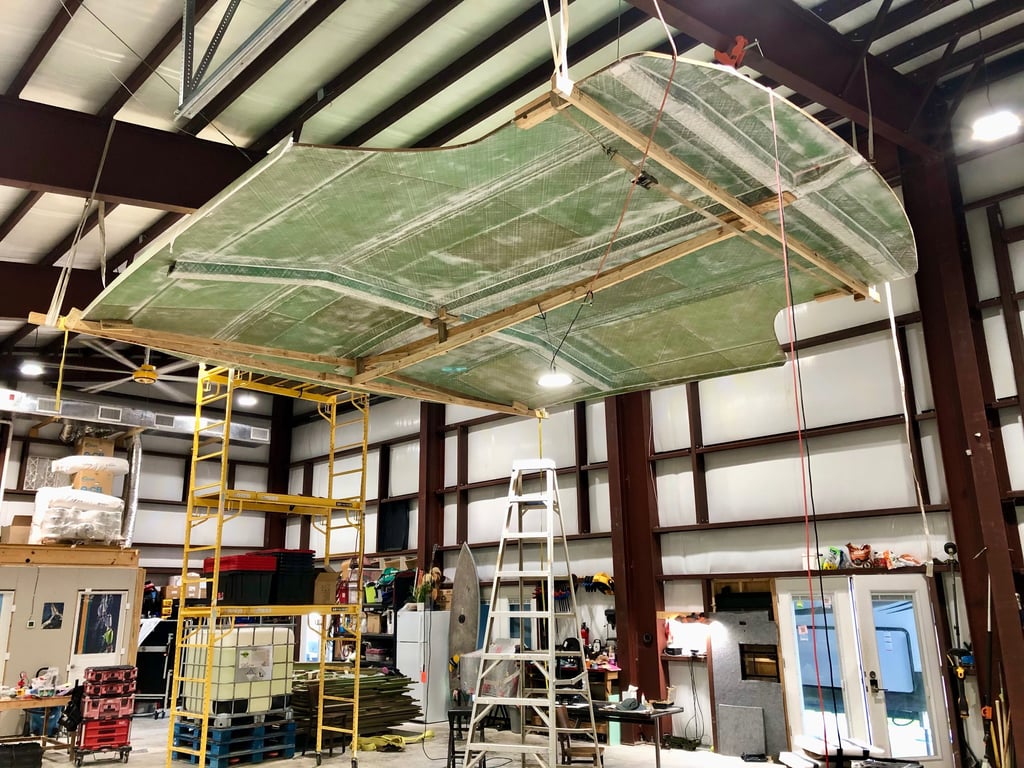

Now, if you’ll excuse me, I’m off to sleigh the season and help build the hull! hull! hull(s)!
Peace out.
